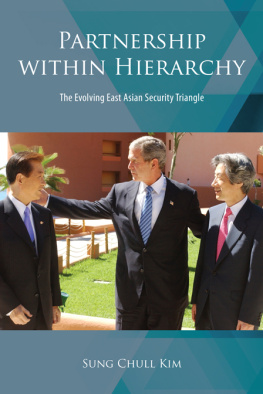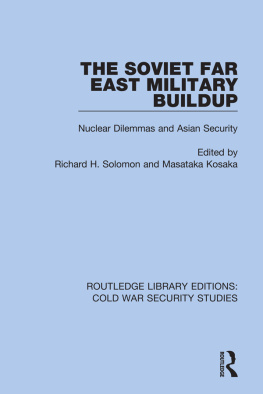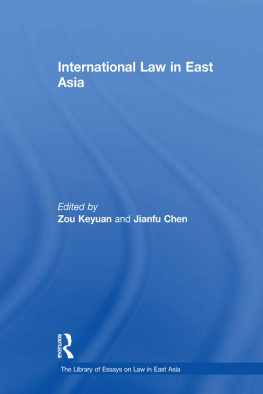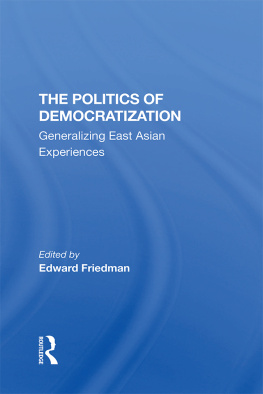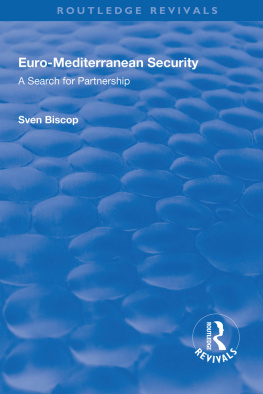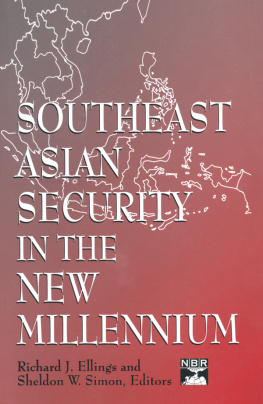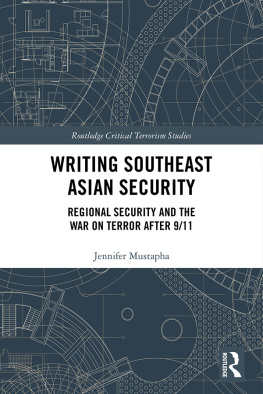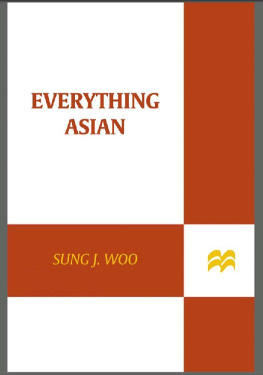Cover photo of United States President George W. Bush, South Korean President Kim Dae-jung, and Japanese Prime Minister Junichiro Koizumi at the Asia-Pacific Economic Cooperation summit in Los Cabos, Mexico, October 26, 2002. Courtesy of Yonhap News. All Rights Reserved.
Published by State University of New York Press, Albany
2017 State University of New York
All rights reserved
Printed in the United States of America
No part of this book may be used or reproduced in any manner whatsoever without written permission. No part of this book may be stored in a retrieval system or transmitted in any form or by any means including electronic, electrostatic, magnetic tape, mechanical, photocopying, recording, or otherwise without the prior permission in writing of the publisher.
For information, contact State University of New York Press, Albany, NY
www.sunypress.edu
Production, Ryan Morris
Marketing, Michael Campochiaro
Library of Congress Cataloging-in-Publication Data
Names: Kim, Sung Chull, 1956 author.
Title: Partnership within hierarchy : the evolving East Asian security triangle / Sung Chull Kim.
Description: Albany : State University of New York Press, 2017. | Includes bibliographical references and index.
Identifiers: LCCN 2016031443 (print) | LCCN 2016050246 (ebook) | ISBN 9781438463933 (hardcover : alk. paper) | ISBN 9781438463957 (e-book)
Subjects: LCSH: Security, InternationalEast Asia. | East AsiaForeign relations | JapanForeign relationsKorea (North) | Korea (North)Foreign relationsJapan. | JapanForeign relationsKorea (South) | Korea (South)Foreign relationsJapan. | Korea (North)Foreign relationsKorea (South) | Korea (South)Foreign relationsNorea (North)
Classification: LCC JZ6009.E18 K56 2017 (print) | LCC JZ6009.E18 (ebook) | DDC 355/.03305dc23
LC record available at https://lccn.loc.gov/2016031443
10 9 8 7 6 5 4 3 2 1
For my mother Lee Gwang-duk,
who gave me inspiration, wisdom, and the spirit of endurance
Acknowledgments
Since I conceived the idea of this project nine years ago, I have benefited from the insight, guidance, suggestions, and kindness of many people, and from the generous support and assistance at various institutions. Inasmuch as I used a voluminous amount of archives declassified in the United States, Korea, and Japan, I relied on the guidance of archivists and specialists in that respect: Jim Leyerzapf and David A. Langbart at the National Archives and Records Administration; Mary Curry and Robert Wampler at the National Security Archive at the George Washington University; Yu Bong-hyun at the Office of Diplomatic History Archives of the Ministry of Foreign Affairs in Korea; Park Jin-hee, Kim Jeom-sook, and Kang In-goo at the National Institute of Korean History. Also, I received kind assistance of librarians at the Jangseogak of the Academy of Korea Studies in Seongnam in Korea, the Institute of Developing Economics in Chiba and the National Diet Library-Kansaikan in Kyoto in Japan. Park Jung-jin, Choi Kyungwon, and Hong Seuk-ryule provided helpful suggestions for locating Japanese or U.S. sources. Paul Midford was kind to immediately send me his works that I needed urgently.
On this particular topic, I have received more penetrating insights from David Kang than from any others; in particular, his conception of hierarchy in international relations in Asia greatly attracted my attention. Because I presented parts of this work at some annual conferences including the Association for Asian Studies and the International Studies Association, I had wonderful chances to either receive specific comments from or learn through discussions with many scholars. They are Gilbert Rozman, Huiyun Feng, Kim Ji Young, Walter Hatch, Mark Caprio, Charles Armstrong, Tae-Hwan Kwak, Heon-joo Jung, Min-hyung Kim, Togo Kazuhiko, Kimura Kan, Asano Toyomi, Tsuneo Akaha, Kei Koga, Michael Cohen, Justin Hastings, Wade Huntley, Choi Youngho, and Kim Tae-ki. Those whom I met at workshops or conferences held in Japan, Korea, China, Hong Kong, Singapore, and Taiwan during my research on this topic contributed to broadening my views on regional dynamics between powers of differing capability: they are Lowell Dittmer, Etel Solingen, Stephen Haggard, Kenneth Quinones, Dae-sook Suh, Chae-jin Lee, Young C. Kim, Im Hyug-baeg, Lee Guen, Victor Teo, Kim Soung-chul, Shin Bong-gil, Sheen Seong-ho, Ahn Byung-woo, Bong Youngshik Daniel, Youn Hwang, Kim Keun-sik, Lee Jung-chul, Choi Sang-oh, Park Pilho, Kim Young-jak, Nakanishi Hiroshi, Kimijima Akihiko, Takahara Takao, Yamane Kazuyo, Moon Chung-in, Yi Ki-ho, Umebayashi Hiromichi, Morton H. Halperin, Yoon Tae-ryong, Zhe Sun, Jingdong Yuan, Chung Hunsup, Takesada Hideshi, Choo Jaewoo, Kim Bong-jin, Suh Seung-won, Miyamoto Satoru, Komaki Teruo, Nakagawa Masahiko, Hoshino Toshiya, Chang Dal-joong, Chun Chaesung, Kim Eun-mi, Kim Chang-su, Son Key-young, Chung Yousun, Sorpong Peou, and Van Jackson.
Hiro Katsumata, who always makes humorous but critical and helpful comments at conferences, read the two opening chapters of the manuscript and made valuable suggestions to clarify my analytic framing. My old friends Lam Peng Er and Yangmo Ku, with their colossal knowledge on details of events, did not hesitate to read chapters and help me improve them. The Korean experts on Japan studies such as Nam Ki-jeong, Park Cheol Hee, and Lee Won-deog either gave me invaluable suggestions on the manuscript or connected me to the academics in Japan. Through critical debates, Park Dong-jun, Lee Sang-hoon, Kwon Hee-young helped to refine my views on the troubling issues in Korea-Japan relations. Ku Nan-hee helped my collection of the data on disputes on the Japanese textbook issue and gave me further insights on the historical issues.
Through my attendance at the annual forum organized by the National University of Singapore East Asian Institute under the leadership of Zheng Yongnian, I have had the valuable opportunity to learn about China and Southeast Asia that otherwise I might have missed. I really appreciate the advice from those great scholars on China and the world such as Edward Friedman, Dorothy Solinger, T. J. Cheng, Chienmin Chao, and Fei-Ling Wang. Also the meeting with Patrick Morgan, T. V. Paul, and Terence Roehrig was a precious chance to widen my scope on deterrence, an increasingly important integral part in the topic of this book.
My former colleagues at the Hiroshima Peace InstituteHiroshima City University provided me with a warm environment that enabled me to concentrate on this topic until I left there in 2012. Fukui Haruhiro read the entire manuscript and gave me specific comments for clarification. Asai Motofumi told me of old U.S.-Japan relationship, a narrative that was based on his diplomat experience. Numerous discussions with Kikkawa Gen, Mizumoto Kazumi, Yuki Tanaka, Christian Scherrer, Narayanan Ganesan, and Robert Jacobs enriched my ideas on this topic. Nagai Hitoshi, Takemoto Makiko, Takahashi Hiroko, Kawakami Akihiro, and Kim Tae-wook did not hesitate to help me access diverse Japanese materials and made my time in Hiroshima most exciting and productive. Inoue Yoshitaka, Tatebe Kenji, Tsumura Hiroshi, Yodono Takeshi, Santoh Tadahiro, Yamashita Yoshie, Nomura Miki, Yoshihara Yukiko, Yoshimoto Michiko, Kajihama Jun, Takahashi Yuko, and Kuramoto Tomoko all made efforts for my success with their administrative assistance and library work, including locating microfiches and microfilms. Also, I was fortunate to have met many great scholars during my time in Hiroshima: Wada Haruki, Kang Sang-jung, Tessa Morris-Suzuki, Gavan McCormack, Lee Jong-won, Kimiya Tadashi, Carol Gluck, Mark Seldon, Marie Soederberg, Okonogi Masao, Lee Aeliah, and Akiba Tadatoshi. They became a source of inspiration and nuanced interpretation of old subjects of Japan.


